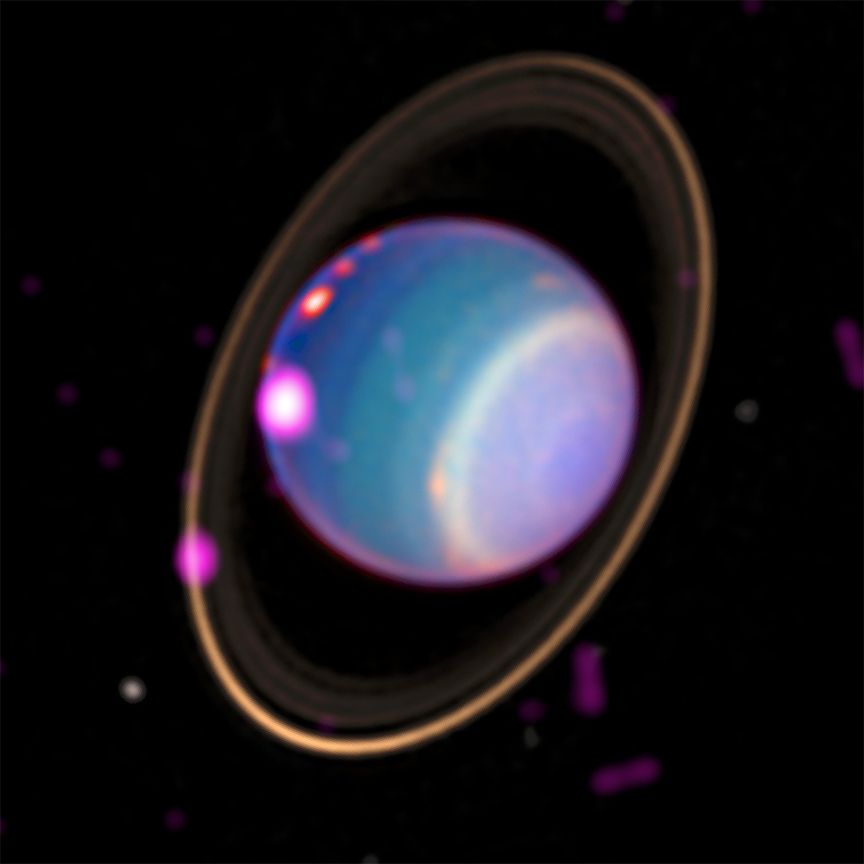
Posted on 03/31/2021 4:05:23 PM PDT by BenLurkin
Plenty of solar system objects emit X-rays — everything from Venus to Saturn to moons of Jupiter, the scientists write in a paper describing their research. In fact, of the solar system's planets, only little-studied Uranus and Neptune were missing from the list.
The team of astronomers were particularly drawn to study Uranus in X-rays because the planet's alignments are quite jumbled: the planet lies on its side and the axis of its magnetic field is akimbo from both the orbital plane and the spin axis. The skewed axes may trigger particularly complicated auroras, which can emit X-rays.
So the scientists decided to dig into the scant Chandra observations of Uranus — just three segments of data, one from August 2002 and two from November 2017. The 2002 and 2017 observations also come from different instruments on the telescope, and in the 2017 data, the researchers can't clearly mark which X-rays come from the planet itself and which from elsewhere in the detector's view.

If some of the X-rays the researchers detected are indeed coming from Uranus itself, rather than reflected emissions from the sun, a few phenomena could be at play, the scientists wrote. Saturn's rings produce X-ray fluorescence when hit by charged particles from the sun, and Uranus' two sets of rings may do the same. Or, the X-rays may come from auroras on Uranus, as they do on Jupiter, although scientists aren't positive what would trigger the auroras themselves.
(Excerpt) Read more at space.com ...
True. Very true.
That poor child.>>>>>>>>>>>>>>>
They are much poorer in Donna , Texas.
With the amount of radiation therapy I have had, it is no wonder Myanus is giving off radiation!
Disclaimer: Opinions posted on Free Republic are those of the individual posters and do not necessarily represent the opinion of Free Republic or its management. All materials posted herein are protected by copyright law and the exemption for fair use of copyrighted works.